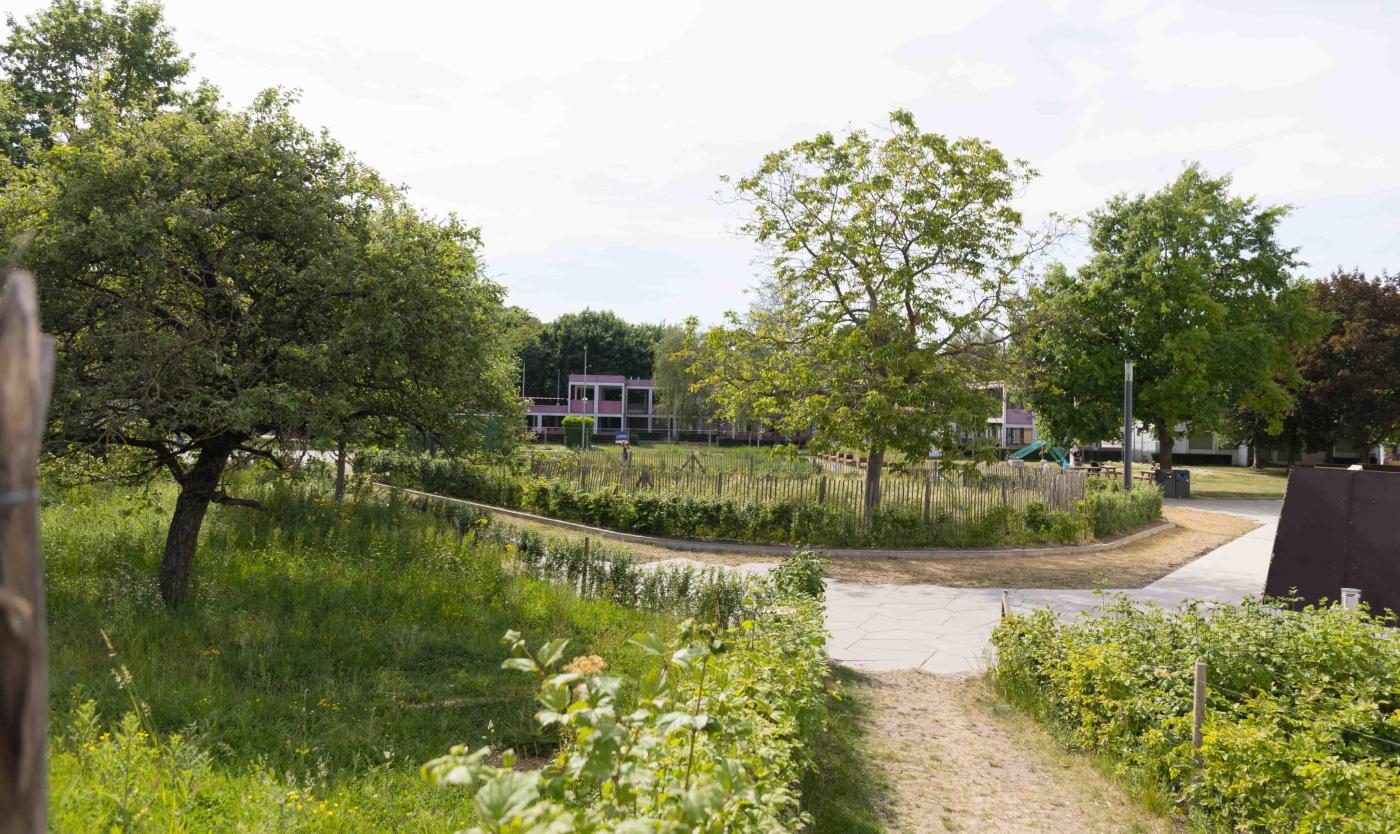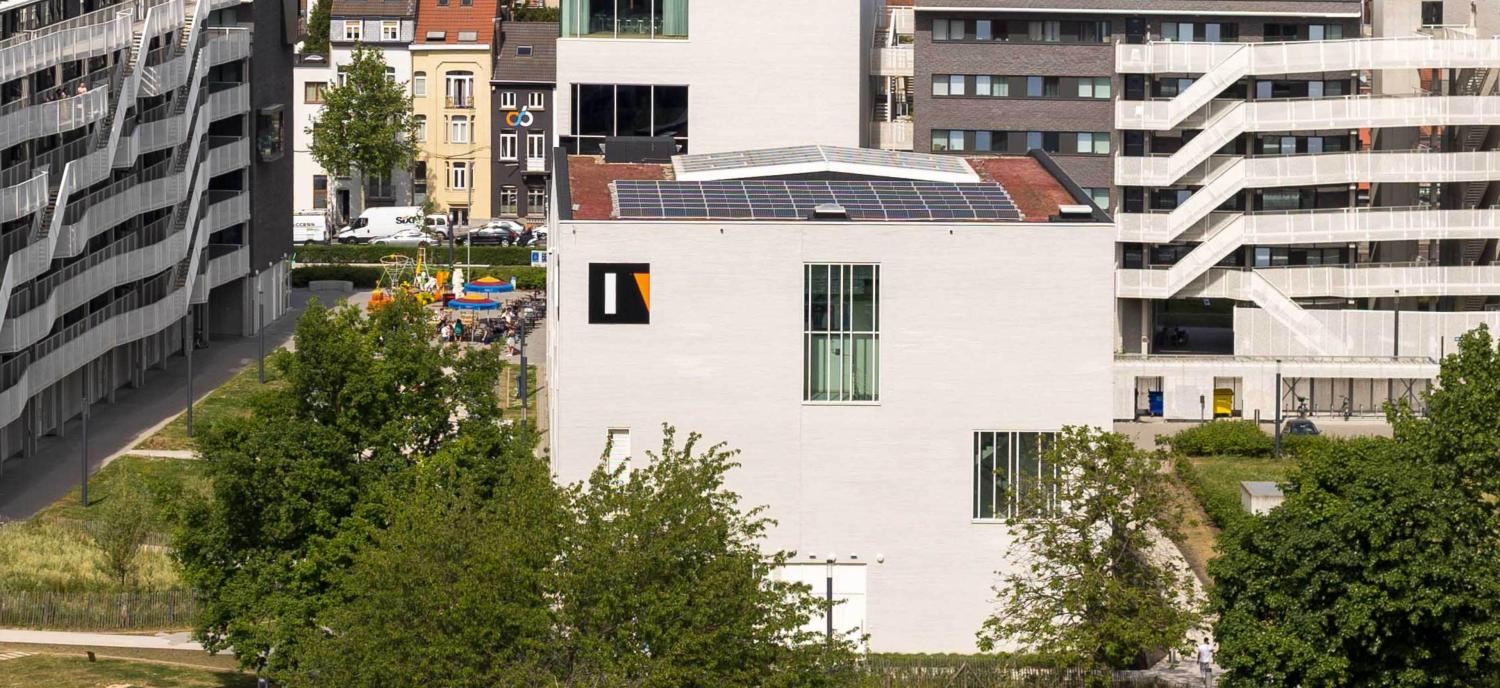
Good for the climate
Building L with its 14 classrooms and auditoriums has a green roof of 1,536 m² that can be seen from Pilar.
Green roofs are useful in mitigating the effects of climate change. They collect water, keep the environment cool and provide food for insects.
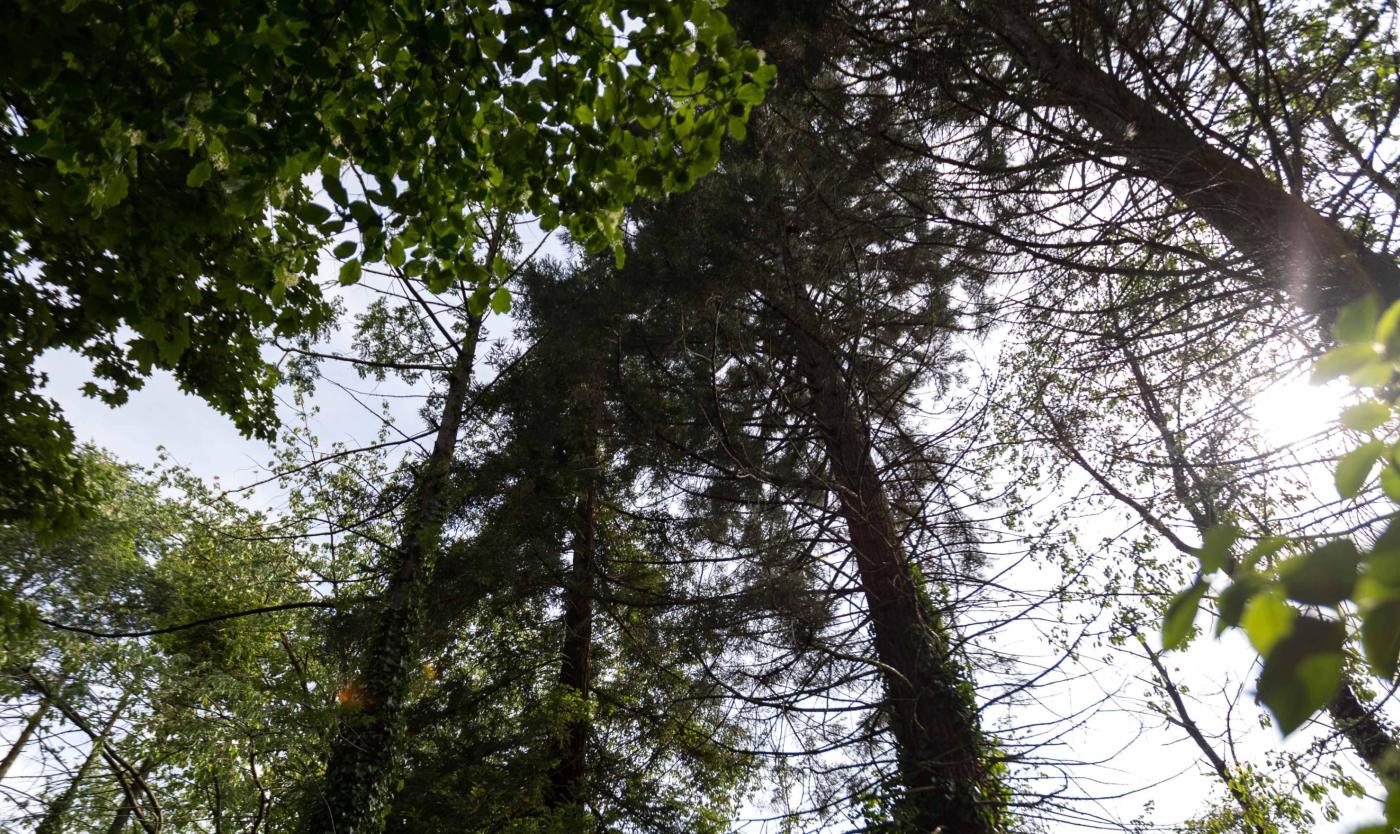
Cooling effect
The cooling effect of green roofs can reduce the energy bill for cooling by 6%. They also have a positive effect on the temperature outside: on hot days, every 20% increase in urban green space pushes the temperature down by one degree.
Long live the insects
Green roofs usually feature plants that occur naturally in rocky areas such as mountains. They are species that must withstand extreme temperatures, bright light and drought. The plants used here include various species of sedum (Sedum sp.), which can be found in places like the Ardennes. They are flowering herbs: the pollen and nectar of the flowers help maintain insect populations in the city, such as various species of bees and bumblebees.
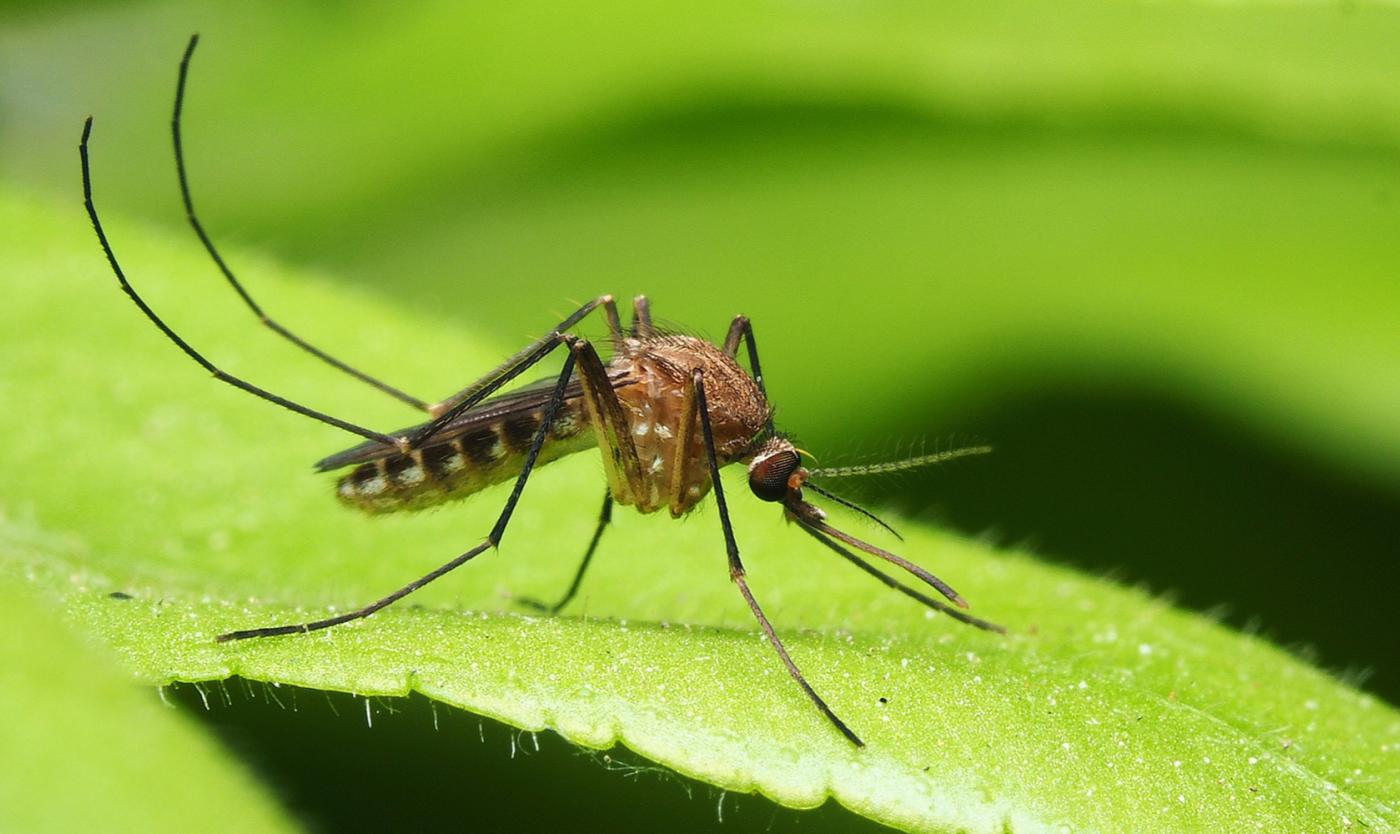
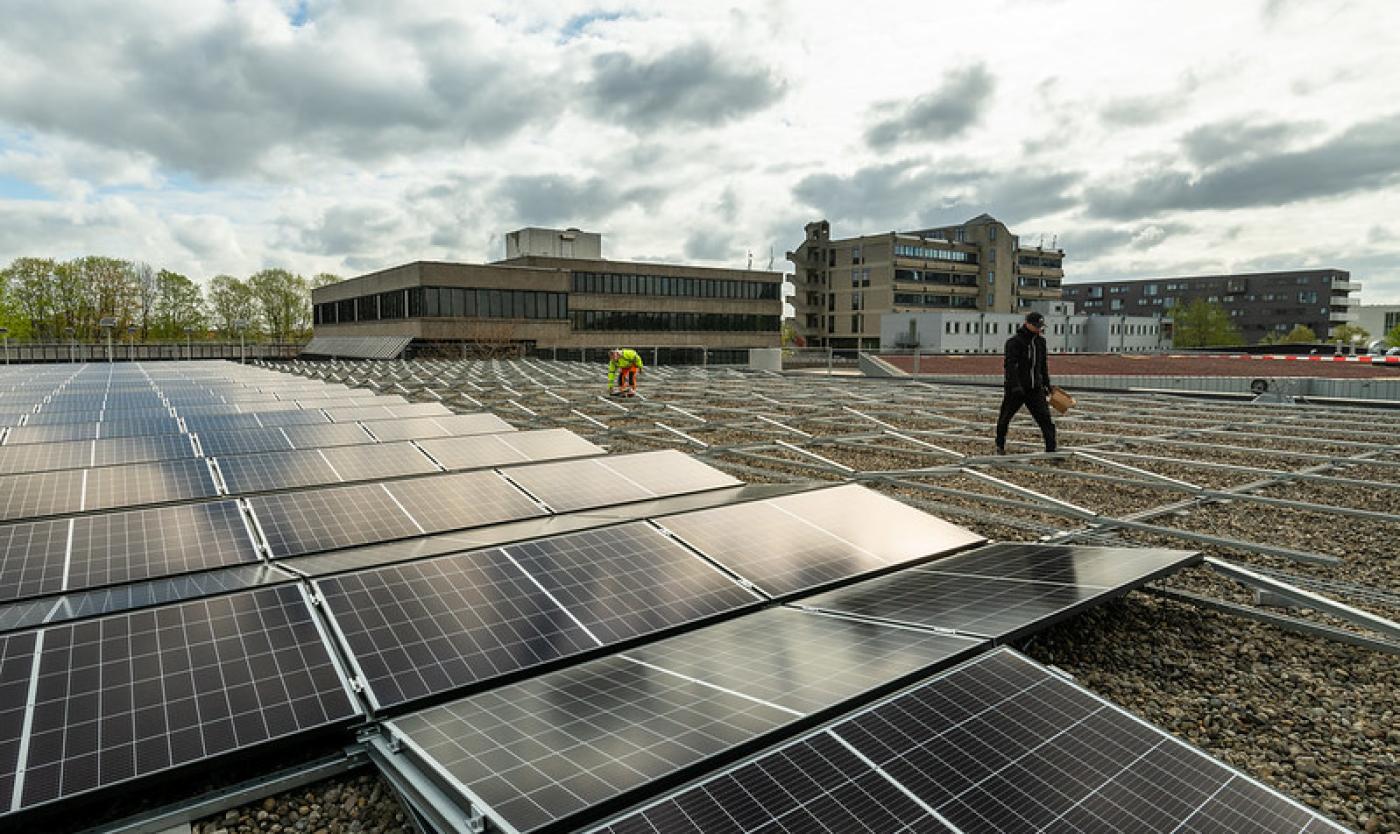
Good for green electricity
Green roofs in combination with solar panels are also good for the yield of green electricity. The efficiency of solar systems decreases when the roof gets very hot: every extra degree above 25°C decreases the electricity yield by up to 1%. Green roofs should not get hotter than 35°C so as to prevent drastic dips in power production.
Drains extreme precipitation
The vegetation on the roof also drains extreme precipitation. Good vegetation can absorb up to 70% of the water that falls down. The rest can be collected and stored on the roof. This causes a lot less inconvenience, and it is also cheaper: Every cubic metre of rainwater that the city does not have to drain away saves almost half a euro.
